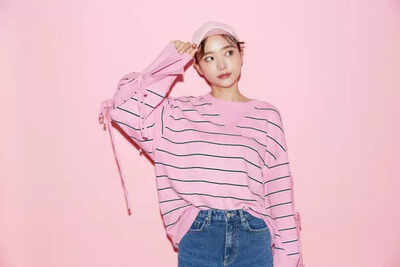ARTICLE AD BOX

Korean fashion brands are making crores through e-commerce platforms, revolutionizing how young people shop and discover new styles in the digital age.
Picture this: a fashion brand that's barely a year old makes ₹25 crore in a single online sale event, and within months, their total revenue crosses ₹160 crore. This isn't some startup fairy tale anymore - it's the reality happening right now in Korea's fashion scene. The era of big corporations dominating fashion is officially over. Now it's the age of independent brands with quirky names that sound like your favorite indie bands or YouTube channels. These brands are capturing young hearts with their unique personalities and authentic vibes. The success stories are absolutely mind-blowing. One woman started with a blog shop and built it into a brand generating ₹965 crore annually within nine years.
A designer couple launched their brand and saw sales jump from ₹72 crore to ₹884 crore in just four years - that's a 12x increase! These numbers would make any startup founder green with envy. What's fascinating is how these brands aren't following traditional fashion rules. They're creating their own playbook, speaking directly to young consumers who value authenticity over corporate polish. It's like watching the democratization of fashion happen in real-time.

Digital Platforms Creating Fashion Democracy
The heart of this revolution lies in online fashion platforms. Korea's major fashion platforms collectively attract over 16 million users monthly - that's like having the entire population of Delhi and Mumbai browsing fashion online every month! Unlike Western platforms that push established brands, Korean platforms take a refreshingly different approach. They actively discover and nurture unknown independent labels.
It's like having social media platforms that actually care about promoting new creators over established influencers - prioritizing creativity and originality over corporate size.

This relationship is beautifully symbiotic. When small brands start selling through these platforms, they often see 5x more sales volume than on their own websites. Meanwhile, the platforms are also thriving - one major platform recorded ₹9,600 crore in annual sales last year, growing 25% from the previous year. The platforms have become more than just marketplaces; they're fashion incubators. They provide everything from marketing support to trend insights, helping small brands navigate the complex world of online retail. It's like having a mentor who genuinely wants to see you succeed.The Algorithm-Driven Fashion Ecosystem But here's where things get interesting (and slightly scary). While these platforms have democratized fashion discovery, they've also created new power structures.
Fashion industry experts note that "it's no longer just about great design or storytelling. Understanding platform algorithms and curating according to their logic has become key to survival." This sounds eerily familiar to what content creators face on Instagram or YouTube. Success increasingly depends not just on creativity, but on understanding platform politics. Which brand gets featured on the main page often determines both sales and survival - it's like being in a reality show where the judges control your entire career trajectory. The platforms recognize this responsibility and are using their power thoughtfully. They host weekly sales events specifically for emerging brands, run incubation programs where over 70% of participants are brands established within the past three years. It's like having a talent show where the judges actually want to help contestants succeed rather than just eliminate them.The Fashion Trends We Should All Be Watching What's most fascinating about this Korean fashion revolution are the emerging trends that reflect what young consumers actually want.
Looking at the preferred styles, several clear patterns emerge. First is comfort-first fashion. Oversized tees, relaxed-fit pants, and easy-to-coordinate set pieces are dominating. This perfectly mirrors what Indian millennials want to wear in 2025 - clothes that look good but feel like pajamas. With remote work and casual lifestyles becoming the norm, the line between loungewear and streetwear has completely blurred. Second is sustainability and conscious consumption. Young consumers are choosing brands that care about the environment and fair labor practices over just looking pretty. This mirrors the values-driven shopping behavior we're seeing among Indian Gen Z - they want their purchases to align with their beliefs. Third is the rise of gender-neutral fashion. Designs, colors, and silhouettes that anyone can wear regardless of gender are gaining massive popularity.
This trend reflects young people's desire to break free from traditional gender stereotypes and express themselves authentically. Finally, fusion styling is everywhere. The trend of mixing traditional elements with modern streetwear is huge. This is incredibly relatable to Indian fashion enthusiasts who pair chunky sneakers with sarees or add denim jackets to kurtas. Both cultures share this love for creating unique personal styles by blending different aesthetics. What's particularly interesting is how these trends transcend geographical boundaries. Young people in Korea and those in Mumbai or Delhi are gravitating toward similar styles - comfort, sustainability, gender neutrality, and cultural fusion. It's like fashion is becoming a universal language for expressing youth values. The most inspiring part of this Korean fashion story is how it proves that creativity and authenticity can still triumph over corporate muscle in today's digital world. These indie brands succeeded because they understood their target audience, leveraged digital tools smartly, and stayed true to their unique vision. The future of fashion isn't just about what you wear - it's about how you connect with your audience online, how you navigate digital platforms, and how you build a community around your brand.
In this new world, winning at fashion truly means winning on the internet.



.png)
.png)
.png)
















 2 hours ago
5
2 hours ago
5









 English (US) ·
English (US) ·